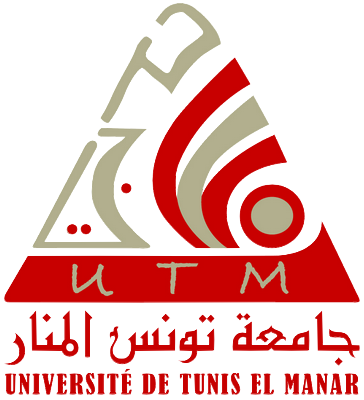Spiritual Eroticism and Sexuality of Slaves in Cuba
DOI:
https://doi.org/10.71564/dh.vi5.56Keywords:
Cuba, Slave, Sexuality, Eroticism, ReligionAbstract
This article compares two perspectives of sexuality during the time of slavery in Cuba. One that focuses on the control of the body and dehumanization of the slave. The other one has its roots in the catholic religion and criticizes the injustices of slavery. The first approach is typical of the way Cuban slave holders controlled, regulated and benefited from the slaves’ sexuality through their breeding slave plantations. It relied on a cruel logic that used the slaves' bodies as reproductive machines. The other, that appears in “antislavery” novels, sublimated the slaves' sexuality through a religious discourse.
Downloads
References
BARNET, Miguel (1998). Cimarrón. Historia de un esclavo. Madrid: Ediciones Siruela.
BATAILLE, Georges (2008). El erotismo. México: Tusquets Editores.
CAMACHO, Jorge (2015). Miedo negro, poder blanco en la Cuba colonial. Madrid: Iberoamericana/Vervuert.
CASAS, Bartolomé de (1982). Brevísima relación de la destrucción de las Indias. Madrid: Cátedra.
CHATEAUSALINS, Honorato Bernard de (1854). El vademécum de los hacendados cubanos, o guía práctica para curar la mayor parte de las enfermedades; obra adecuada a la zona tórrida, y muy útil para aliviar los males de los esclavos. La Habana: Depósito de libros.
Colección de documentos para la historia de la formación social de Hispanoamérica (1493-1810), vol. 2. (1958). Richard KONETZKE (ed). Madrid: Consejo Superior de Investigaciones Científicas.
DELEUZE, Gilles (2001). Presentación de Sacher-Masoch. Lo frío y lo cruel. Buenos Aires: Amorrortu editores.
FOUCAULT, Michel (2012). Historia de la sexualidad. Madrid: Biblioteca Nueva.
——— (2003). Society Must Be Defended: Lectures at the Collège de France 1975-1976. New York: Picador.
FOWLER CALZADA, Víctor (1998). La Maldición: una historia del placer como conquista. La Habana: Editorial Letras Cubanas.
GÓMEZ DE AVELLANEDA, Gertrudis (1963). Sab. La Habana: Editorial Nacional de Cuba.
GUANCHE, Jesús (2016). Iconografía de africanos y descendientes en Cuba. La Habana: Editorial de Ciencias Sociales.
HUGO, Victor (1840). Bug-Jargal o El negro rey. Trad. D. M. Bosch. Barcelona: Imprenta de D. Manuel Sauri.
GHORBAL, Karim (2009). “La política llamada del ‘buen tratamiento’: reformismo criollo y reacción esclavista en Cuba (1789-1845)”. Nuevo Mundo, Mundos Nuevos [https://doi.org/10.4000/nuevomundo.57872].
GORDON, Nathan (2017). “Sab y la figura del Santo Apóstol Bernabé”. Hispanófila, 179: 157-171.
KIRKPATRICK, Susan (1989). Las Románticas. Woman Writers and Subjectivity in Spain, 1935-1850. Berkeley: University of California Press.
KUTZINSKI, Vera. M. (1993). Sugar’ Secrets: Race and the Erotics of Cuban Nationalism. Charlottesville: University Press of Virginia.
LUIS, William (1990). Literary Bondage: Slavery in Cuban Narrative. Austin: University of Texas Press.
MARQUÉS DE ARMAS, Pedro (2014): Ciencia y poder en Cuba. Racismo, homofobia, nación (1790-1970). Madrid: Editorial Verbum.
MÈLICH, Joan-Carles (2014). Lógica de la crueldad. Barcelona: Herder Editorial.
MONTE, Domingo del (2002). “Carta a Gener. Matanzas, 4 de Julio de 1834”. En Domingo del MONTE. Centón Epistolario, vol. 1. La Habana: Imagen Contemporánea, 331-34.
MORENO FRAGINALS, Moreno (2001). El Ingenio: complejo económico social cubano del azúcar. Barcelona: Crítica.
NÚÑEZ JIMÉNEZ, Antonio (1989). Marquillas cigarreras cubanas. Madrid: Sociedad Estatal del Quinto Centenario.
PARRA CALLADO, Antonio (1787). Descripción de diferentes piezas de historia natural las más del ramo marítimo, representadas en setenta y cinco láminas. La Havana: Imprenta de la Capitanía General.
PICON GARFIELD, Evelyn (1993). Poder y sexualidad. El discurso de Gertrudis Gómez de Avellaneda. Atlanta: Rodopi.
ROSENTHAL, Dedra (2004). Race Mixture in Nineteenth-century U.S. And Spanish American Fictions: Gender, Culture, and Nation Building. Chapel Hill: The University of North Carolina.
SANTA CRUZ Y MONTALVO, Maria. D. L. M. (1841). “Les esclaves dans les colonies espagnoles”. Revue des Deux Mondes, 26: 734-69.
——— (2014). Los esclavos en las colonias españolas. Barcelona: Linkgua, 2014.
SCHULMAN, Ivan (1977). “The Portrait of the Slave: Ideology and Aesthetics in the Cuban Anti-slavery Novel”. Annals of the New York Academy of Sciences, 292 (1), 356-67.
SILVERSTEIN, Stephen (2015). “The Cuban Anti-Antislavery Genre: Anselmo Suárez y Romero’s Colección de artículos and the Policy of Buen Tratamiento”. Revista Hispánica Moderna, 68 (1): 59-75.
STOCKLE, Verena (1992). Racismo y sexualidad en la Cuba colonial. Trad. Ana Sánchez Torres. Madrid: Alianza América.
SUÁREZ Y ROMERO, Anselmo (1868). “Sr. Don Andrés Clemente Vázquez”. En Andrés CLEMENTE VÁZQUEZ. Estudios Jurídicos. Imprenta La Antilla, de Cacho-Negrete, cxxxvi-clx.
——— (1947). Francisco. La Habana: Publicaciones del Ministerio de Educación, Dirección de Cultura.
——— (2002). “Carta CCXXII”. En Domingo del MONTE. Centón Epistolario, vol. 2. La Habana: Imagen Contemporánea, 346-350.
VÁZQUEZ QUEIPO, Vicente (1845). Informe fiscal sobre fomento de la población blanca en la isla de Cuba. Madrid: Imprenta de J. Martín Alegría.
WILLIAMS, Lorna Valerie (1994). The Representation of Slavery in Cuban Fiction. Columbia: University of Missouri Press.
ZAMBRANA, Antonio (1979). El negro Francisco. Prólogo Salvador Bueno. La Habana: Editorial Letras Cubanas.
Downloads
Published
How to Cite
Issue
Section
License
Copyright (c) 2018 Jorge Camacho

This work is licensed under a Creative Commons Attribution-NonCommercial 4.0 International License.
Los autores que publican en esta revista están de acuerdo con los siguientes términos:
Los autores conservan los derechos de autor y garantizan a la revista el derecho de ser la primera publicación del trabajo al igual que licenciado bajo una Creative Commons Attribution License que permite a otros compartir el trabajo con un reconocimiento de la autoría del trabajo y la publicación inicial en esta revista, sin hacer uso del material con propósitos comerciales.
Los autores pueden establecer por separado acuerdos adicionales para la distribución no exclusiva de la versión de la obra publicada en la revista (por ejemplo, situarlo en un repositorio institucional o publicarlo en un libro), con un reconocimiento de su publicación inicial en esta revista.
Se permite y se anima a los autores a difundir sus trabajos electrónicamente (por ejemplo, en repositorios institucionales o en su propio sitio web) antes y durante el proceso de envío, ya que puede dar lugar a intercambios productivos, así como a una citación más temprana y mayor de los trabajos publicados.































